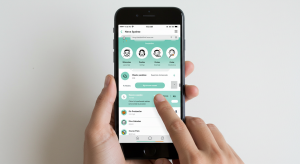IaaS (infrastructure as a service) pricing refers to the billing model(s) used by vendors who deliver IT infrastructure services via the cloud. As with any business, a cloud IaaS vendor has to meet several requirements in order to successfully price its services. To start with, a cloud services provider must know what its operational costs are for its physical IT resources, to determine the COGS (cost of goods sold). Secondly, a cloud services provider must also determine the required profit margin for its services, taking into account all operational costs for the business, in order to achieve the targeted levels of profitability. Furthermore, an organization also needs to do the proper amount of market research prior to premiering any IaaS offering, to ensure that its IaaS pricing is feasible, based on a competitive analysis of similar cloud computing services available in the marketplace.
Pricing Considerations
As previously noted, the COGS (Cost of Goods Sold) needs to be calculated before IaaS pricing can be determined. The COGS is inclusive of all expenses that may be associated with the delivery of an IaaS offering, such as (but not limited to): the cost of utilities for the data center the IaaS offering is built upon, the development costs for the IaaS offering and ongoing labor costs for supporting the IaaS offering. All costs associated with the delivery of an IaaS offering must be carefully analyzed and controlled, especially in the case of start-up IaaS vendors, who may have difficulty estimating cash flow, due to the differences in revenue recognition that can occur under the cloud computing model of IT service delivery.
Many IaaS providers price their services based on the billable hours of usage. For example, an IaaS provider may bill a specific monetary amount, usually calculated in cents (the cent based pricing model), based on the amount of GBs (gigabytes) of RAM used per hour. An IaaS vendor can determine the IaaS pricing for their services by first calculating their hourly operational costs per server, per hour and then adding the desired amount of mark-up, to meet organizational revenue targets. The cent based pricing model that many IaaS vendors subscribe to is also closely related to the pay-as-you-grow concept that is intrinsic to most paid cloud service offerings.
From the consumer’s perspective, the flexibility to only pay for the IT services needed, exactly when needed is what makes IaaS cloud computing such a formidable alternative to traditional on-premise IT resource delivery. With IaaS, any business can quickly expand or contract its IT infrastructure on demand by subscribing to the appropriate mix of IaaS offerings, for pennies per use. IaaS provides organizations of all sizes with access to an unlimited pool of computing resources at very affordable prices.
This page is an archive. To learn more about archive pages click here
The responses below are not provided, commissioned, reviewed, approved, or otherwise endorsed by any financial entity or advertiser. It is not the advertiser’s responsibility to ensure all posts and/or questions are answered.


